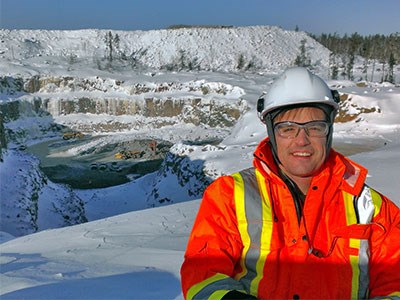It’s no secret – the current down markets are having a particularly negative effect on the juniors in Canada. But Wallbridge Mining Company Limited (TSX - WM) is providing value for its shareholders in unique ways.
“The market certainly hasn’t been kind to a lot of junior mining companies,” said Marz Kord, president and CEO of Wallbridge. “Our strategy has always been to explore while we minimize the dilution to our shareholders.”
The company does this in three ways, Kord said: by creating spinout companies, by forming joint venture partnerships, and through asset realization.
To date, Wallbridge has created two spinout companies. In 2005, it created Duluth Metals to explore projects in Minnesota. That company was sold to Antofagasta earlier this year at $0.45 per share, a substantial premium to the $0.07 per share it was trading at prior to the takeover announcement. Kord said that the deal earned shareholders approximately $10 million from an initial investment of $500,000.
Its other subsidiary, Miocene Metals (TSX.V – MII) was founded in 2010 to explore Wallbridge’s properties in southwestern British Columbia. Kord said that this year’s drilling program will likely be valued at $250,000. However, the real story for Miocene is its participation in a reverse takeover with private exploration company Carube Resources, Inc., which owns several properties in Jamaica including the Bellas Gate copper and gold project.
“Those spinouts are essentially our equity investments,” Kord said. “Wallbridge is not actively exploring in Jamaica, but certainly its spinout companies have all the reins to go ahead and generate returns for our shareholders.”
The other benefit of that project is that it involves Australian heavyweight OZ Minerals. Kord said that the partnership through Miocene could lead to future partnerships with OZ on Wallbridge projects as well.
In fact, joint venture partnerships are key to Wallbridge’s strategy of exploring its properties while reducing its own risk. Two years ago, Wallbridge’s budget for exploration was $5.4 million, though of that, 95 per cent was funded through partnerships, Kord said. Although Wallbridge inevitably gives up a percentage of property ownership in these deals, ultimately it helps the project develop faster – Wallbridge may get a smaller piece, but it’s of a much bigger pie.
One partnership was with Impala Platinum Holdings, Ltd. (Implats) which has spent $7.2 million exploring Wallbridge’s Parkin Project in exchange for a 50 per cent interest. The Parkin Project is part of a set of promising properties including near-surface and past-producing mines along the Parkin Offset dyke in Sudbury.
Implats has since decided to divest itself of the project, and Wallbridge will buy back 100 per cent interest in the project “at a substantial discount to past expenditures” according to an April press release, with cash payments to be made over the next five years. The first payment of $100,000 is to be made before June 30.
“The expenditure for us to get it back is much lower than Impala has put in,” Kord said.
Kord said that the company is currently in discussions with other potential partners to further define the deposit. Launch of a pre-feasibility study is about three years away.
Going after low-hanging fruit is the third way in which the company is creating value. It started mining its Broken Hammer property in Sudbury for at-surface deposits as a way to generate income.
“We could have continued to look for a larger discovery, but what we realized was that it was in the best interest of the shareholders for us to start generating a cash-flow operation that funds the exploration that we currently have,” Kord said.
Broken Hammer’s at-surface deposits fit that bill perfectly. “It was never a company-maker, but it was sort of a creative financing.”
The company announced in January that the deposit was 75 per cent larger than projected in terms of tonnes of ore relative to its 2013 Mineral Reserve Estimate. This is due in part to the fact that the copper-PGM veins are thicker and more continuous than originally estimated. Mining operations should be completed by the fall, Kord said.
“We want to use the proceeds from the Broken Hammer project to look for opportunities, whether it’s internal – some of our own properties to advance – or whether it would be external,” Kord said.




